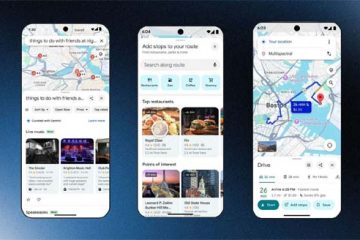Tech Desk : dhakamirror.com
On both a personal and professional level, social media security worries are on the rise. Social media accounts are frequently targeted by hackers who act unethically.
There are a few actions you can take to secure your social media accounts, regardless of the platform, to guard against the chance of hackers gaining control. Following are some of these steps discussed.
Utilize multi-factor authentication (MFA)
When connecting into social media sites and performing other sensitive tasks like updating your password, phone number, or email address, using MFA lets you add an extra layer of security. This implies that even if a hacker manages to discover your password, they will not be able to access your account.
Authenticator apps like Google Authenticator or Microsoft Authenticator can be used to set up MFA.
They assist you in generating a fresh code every 60 seconds that is only valid on the device on which the remote application is installed. To add to your security and peace of mind, do this action.
Make your password more robust
The most basic key to opening your account is your password. The likelihood of your account being compromised is significant if your password is simple to figure out or too widely used.
For instance, a password that contains your name, a series of numbers, or the keys on a keyboard is one of the passwords that may be readily guessed and cracked using a hacking technique called brute force, in which the attacker repeatedly attempts different password combinations.
To create a strong password, you can utilize particular details or uncommon text. When possible, it is advised to utilize a combination of texts, numbers, and unique symbols. The password should also be between 12 and 16 characters.
There is no disadvantage to utilizing 30-character passwords if necessary. Using sentences or phrases as your password rather than a single word is a typical strategy. It is also advised to use both capital and lowercase letters.
This should make it considerably more difficult to crack your password, even though it does not make it impossible to hack.
Like use an analogy, it’s similar to locking the bicycle. Even if a resourceful burglar can still break the lock, using two or three locks will discourage them from trying to take the bike in the first place.
Click on links with caution
On the internet, there are a lot of phishing links and fake third-party apps. Hackers sometimes send them directly to your inbox under the guise of an award or a gift that you have “won.”
It could also look like a request for help in an emergency, and it could lead you to a phishing website, which is basically a cheap copy of the site you are trying to visit. They might have addresses and landing pages that are almost the same.
Please don’t click on any links that don’t look real in these situations. Even if a friend sends you a link, you should never click on it if you aren’t sure you can trust it.
Also, it is strongly suggested that you don’t give your account password to any portals because a hacker could use that link to get your password.
The same goes for scam apps from third parties, which might look like games or something else.
Remember that you will never need your social media password on a website other than the social media site itself to log in or change sensitive information like your password.
When it comes to downloading games, software, or operating systems from sites that are not official, they are not always safe.
So, if you want to download them, you should only do so if you trust the site you are downloading from.
Also, always see what other people have said about the content you’re downloading or looking at on these sites.
Update your system regularly
In addition to specific tips you can follow to keep your account safe, a device that is up to date would go a long way.
If you have the latest version of Windows Defender or a similar antivirus program turned on, it can help keep you from going to scam websites and stop phishing links from opening.
You can use any antivirus software from the internet that is known to be safe. Depending on what you need, you can choose between the free version and the premium version.
Doing this can also make sure that your social media account doesn’t store any sensitive information. But this will make sure that your remote device is safe. Active antivirus software can also stop malware from taking over your system.
Recognize warning indicators of a possible compromise
A hacker may gain access to your account without your knowledge. You may prevent such situations by keeping an eye out for a few things.
Keep an eye out for the email you set up to establish notifications for your social handles, for example. If you receive an email about someone logging in who is not you, it could signify that someone is attempting to access your account.
Furthermore, if you notice adverts for unusual things for a long period of time, such as foreign products, or if you have difficulty logging in to your account with prompts such as “too many attempts, try again,” your account may be under attack.
This could also include circumstances where you notice you are suddenly following accounts you have never followed before, or when your friends ask you if you sent them a link that you cannot see from your end.
In brief, any unauthorized or unexpected activity should be investigated to ensure your account remains secure.











